
14 minute read
The Laguna Verde: Jurassic Monster Trout – Part I
Nine years ago names like Monster Bay, Sea Bay or El Puesto meant nothing to us fly fishers but in a few short years they have become iconic, hallowed pieces of water that we talk of with lust in our eyes and dream of fishing when conditions are right. They have very quickly established themselves amongst the great, revered fly-fishing destinations and deservedly so. They are named bays and features on the Estancia Laguna Verde Lodge water of Lago Strobel (aka Jurassic Lake) in southern Argentina, five hours from the town of El Calafate. So what is the story behind these celebrated pieces of water?
By TARQUIN MILLINGTON-DRAKE
It begins in 1989 when Julio Citadini, a Peace Judge and the then owner of the 40,000 acre Estancia Laguna Verde decided to put 50,000 fingerlings from the Santa Cruz river (originally McCloud river strain rainbow trout) into the Barrancoso river to try and create some fishing for himself. He assumed they had all died until some years later, while walking along this remote river, he spooked some trout and chuckled to himself that in fact, it seemed to have worked.
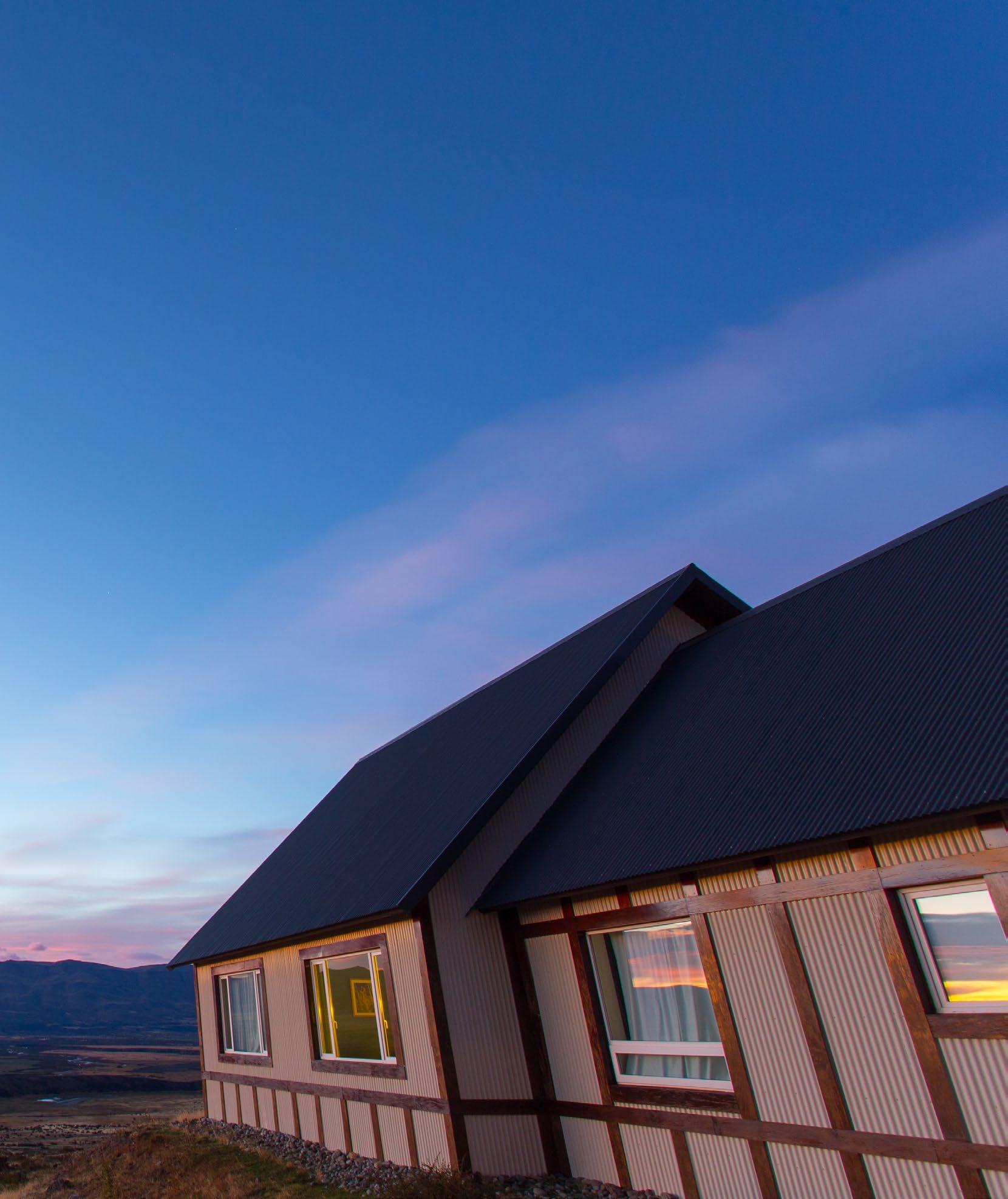
The trout thrived and soon there were plenty and they were getting big and fat. He then realized that the key was the huge food source, shrimps, or scuds, as we call them. He then decided to put some fish in other lagoons on his estancia with the idea of rearing the fish from a free, self-sustaining food supply (the scuds) and harvesting the fish from time to time. Rumour has it that he was encouraged to do this by a sea fishing operation that needed to invest inland in order to gain marine licenses. As soon as they had achieved their objective, they walked away.
Now, as well as Lago Strobel itself, there are lagoons with large, flourishing populations of now wild, self-sustaining rainbow and, in one or two lagoons, brown Move on to 2008 and Julio decided to sell the estancia and Roberto and Luciano Alba, a father and son team of lawyers from Santa Rosa, La Pampa, who had enjoyed a lifetime of fishing together since Luciano was a boy, decided to buy the estancia and develop it for the enjoyment of the fly-fishing fraternity.

They still take some fish from the lagoons from time to time but basically they are left for fishing. I was flattered that I was the first person they contacted about their new project and we have corresponded and done business ever since but while others from Frontiers have been, it has taken me until 2016 to actually make it to see their operation.
My journey began from London but I had to visit some other locations beforehand so the excitement only began to build when I was on the 3-hour and 20-minute flight south to El Calafate from Buenos Aires. The airport there is modern and pleasant and soon I was on my way, rushing to go and see the Perito Moreno Glacier because the Glacier National Park (UNESCO World Heritage Site) closed at 8pm and I landed at 5pm.
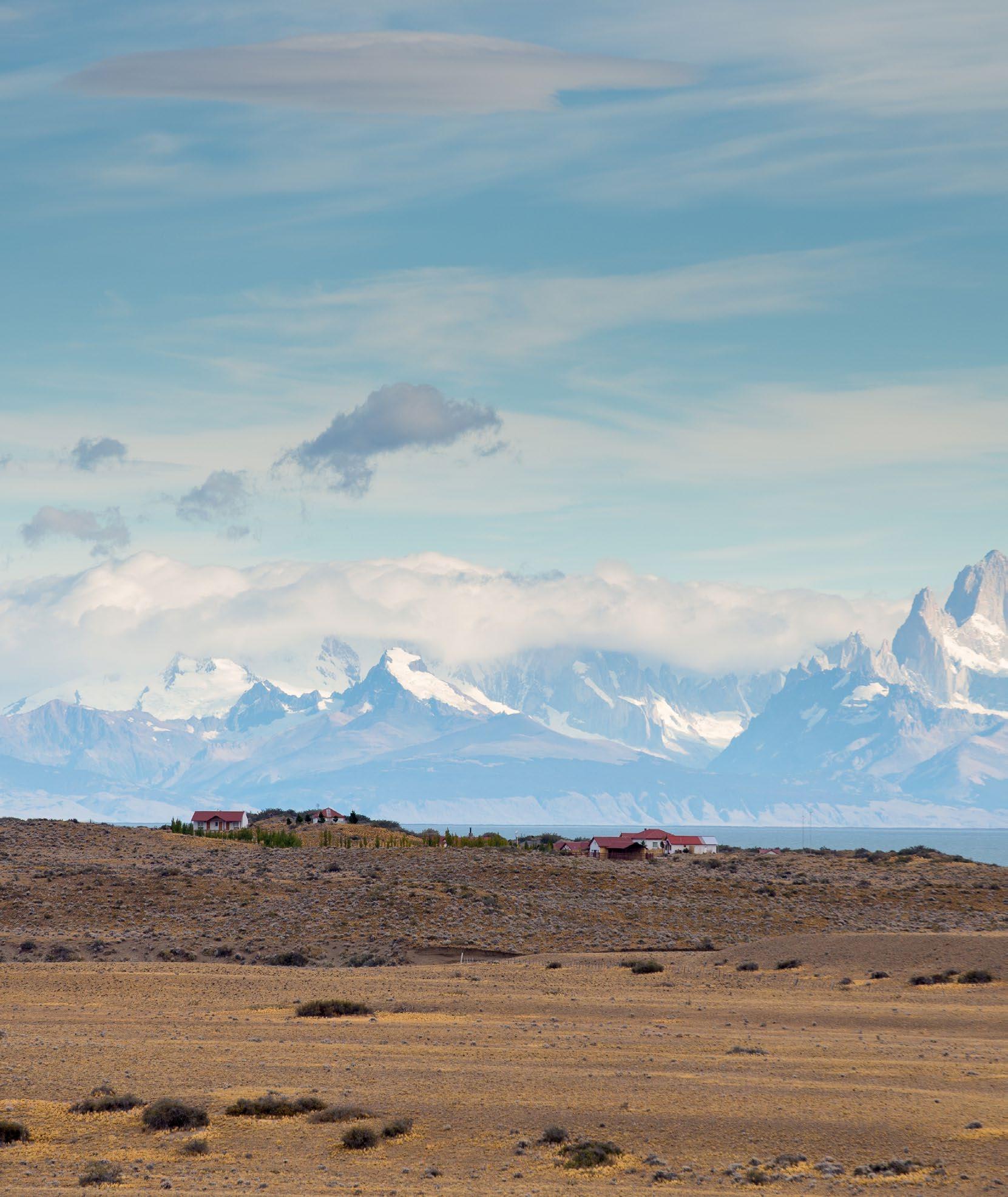
It was 90 minutes to the glacier by car and when I arrived I almost had the incredible maze of steps and walkways to myself. It is the only glacier in South America that is not retracting because they say it snows in the mountains every day. I was very lucky to catch 30 minutes completely alone with this extraordinary phenomenon. It is a living thing and grumbles and growls as if mad at the world for not looking after the planet. A truly moving and memorable experience.
But it was time to head to my hotel for the night where I was very kindly a guest of the wonderful Eolo Hotel. It sits proudly on a hill up its own valley about half way back to Calafate so about 30 minutes from town. Calafate airport is 30 minutes the other side of town. Up the unpaved track we drove and arrived at the archway into the centre of the completely square building. The very kind Valentin Virasoro, the in-house manager, was there to meet me and he lead me through to the main lobby of the hotel to a row of windows and there in front of me, in the evening light, was the most stunning, classic Patagonian view.
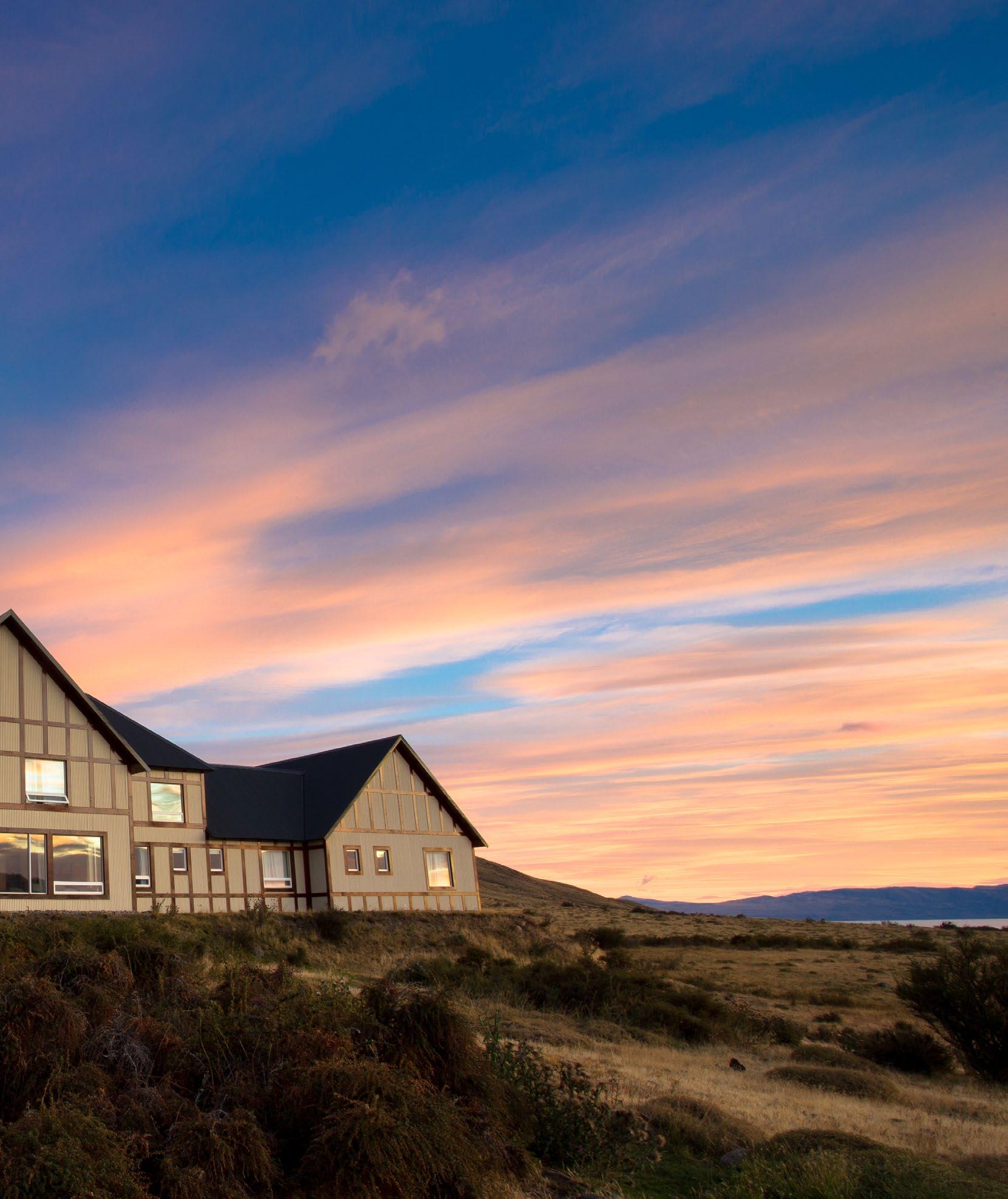
The flat valley with a river, mountains in the background and white-tipped mountains beyond with the most beautiful pastel brushed sky, again so typical of Patagonia. We stood there until the view faded into darkness. Eolo (ancient Greek for ‘wind’) is a place of activity but also relaxation. It has the most serene atmosphere and yet they can help you enjoy riding, walking and mountain biking directly from the hotel among other activities, as well as excursions to the glacier and many other dramatic landscapes. It is a place that lives by the light, everyone was up early and off to see or enjoy what they planned for the day but when darkness fell, it was dinner and bed in one of the 17 spacious suites after a long energetic day. I cannot recommend Eolo enough and I wished I had planned to stay longer.
I was due to be picked up at 8am and was ready and waiting having been rushing around photographing the Patagonian sunrise. Being on time for your pickup is vital and this fact is perhaps not emphasized enough by Estancia Laguna Verde (ELV) because those departing the lodge rely on you being on time in order to drive back to El Calafate to perhaps catch the 3pm flight north to Buenos Aires.

Ricardo, the driver, was there and we headed into Calafate to pick up some other guests before heading out of town, turning north, across the Santa Cruz river (same as the Province) and on our way. The drive was 3 ½ hours including a bathroom and coffee stop at La Leona overlooking the Leona river. This place had seen a few travellers in its time and had real character. I enjoyed our short stop there.
The majority of the road is paved and one follows the Leona river with wonderful views across Viedma Lake towards the town of Chalten and the Fitz Roy and Torre mountains that tower over the town. Then, one leaves the views of the mountains (the third largest ice mass in the world after Antarctica and Greenland) and heads across open plains and onto the dirt road for about the last 50 minutes of the journey. This road is due to be fully tarmacked in the next couple of years. By the time one has enjoyed the surroundings, had a nap then spotted the blue of Lago Cardiel (a sign your journey is coming to a close), the journey is pretty much over and the rendezvous point with the guides and their vehicles is reached just off the road.

A quick movement of luggage from one vehicle to the other and off we go to begin the climb onto what is called the high plateau which is the term used for the kind of country we were due to be fishing and staying in. Soon one is spotting various raptors and guanaco as well as an impressive number of smaller birds that flit from bush to bush as the car goes by. The 90-minute drive is bumpy and slow going but it is a good chance to get to know the guides and understand more about the fishing and the area.
Occasionally, signs show you the way to the lodge but make you chuckle, as there is only one road and one possible way to proceed. Over the brow of the final hill and there is the small settlement overlooking Laguna Verde (‘green lagoon’) and either Luciano or his father Roberto smiling to welcome you. Remarkably, they take great pride in hosting the lodge themselves. They split half the season each away from their law firm.

This is no grand lodge. It has a pioneer or outpost feel to it with traditional hand carved stone walls forming the first and main part of the building, but inside it is cosy, warm and very friendly and everything one would hope for from a lodge in such a remote place and harsh environment.
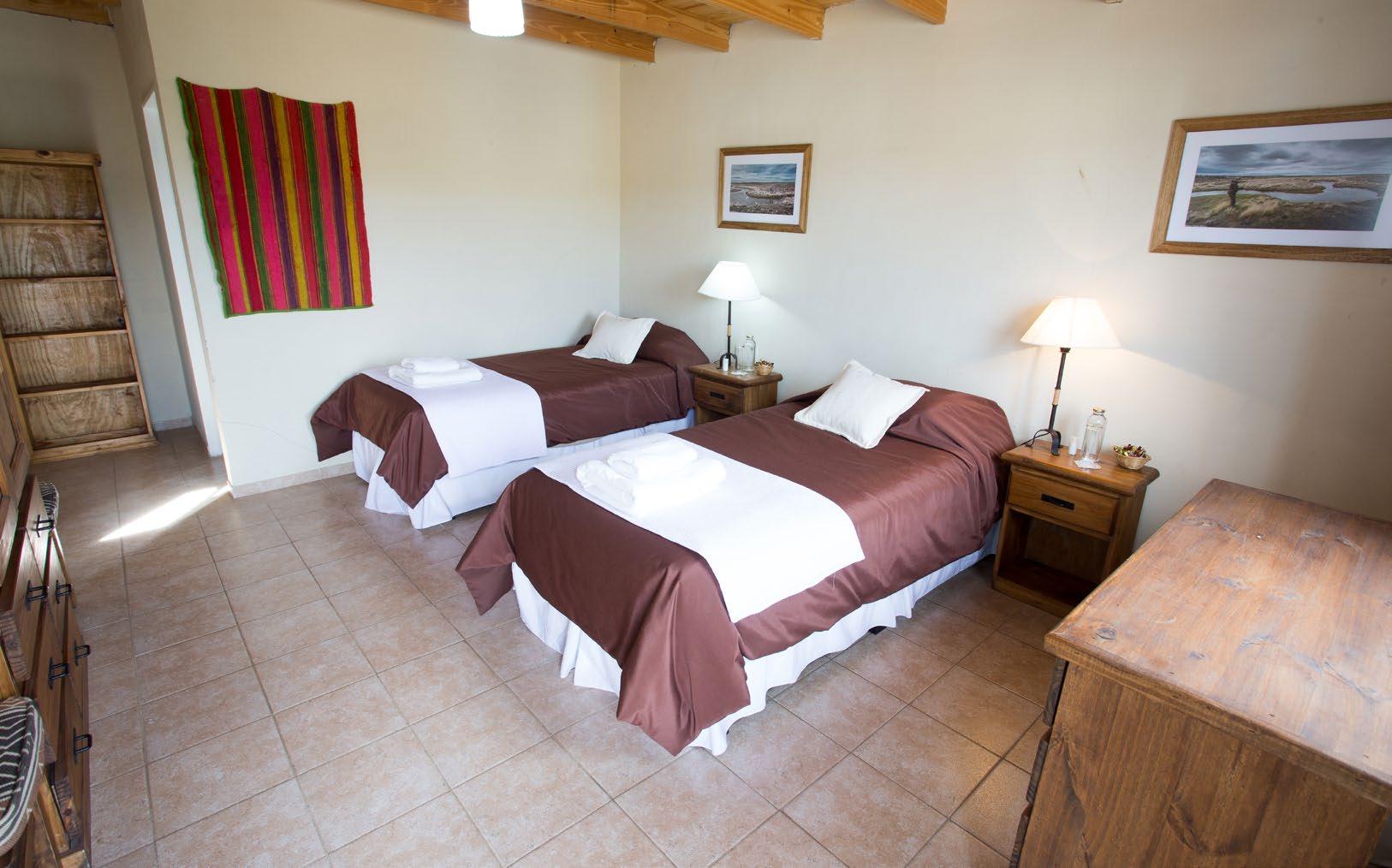
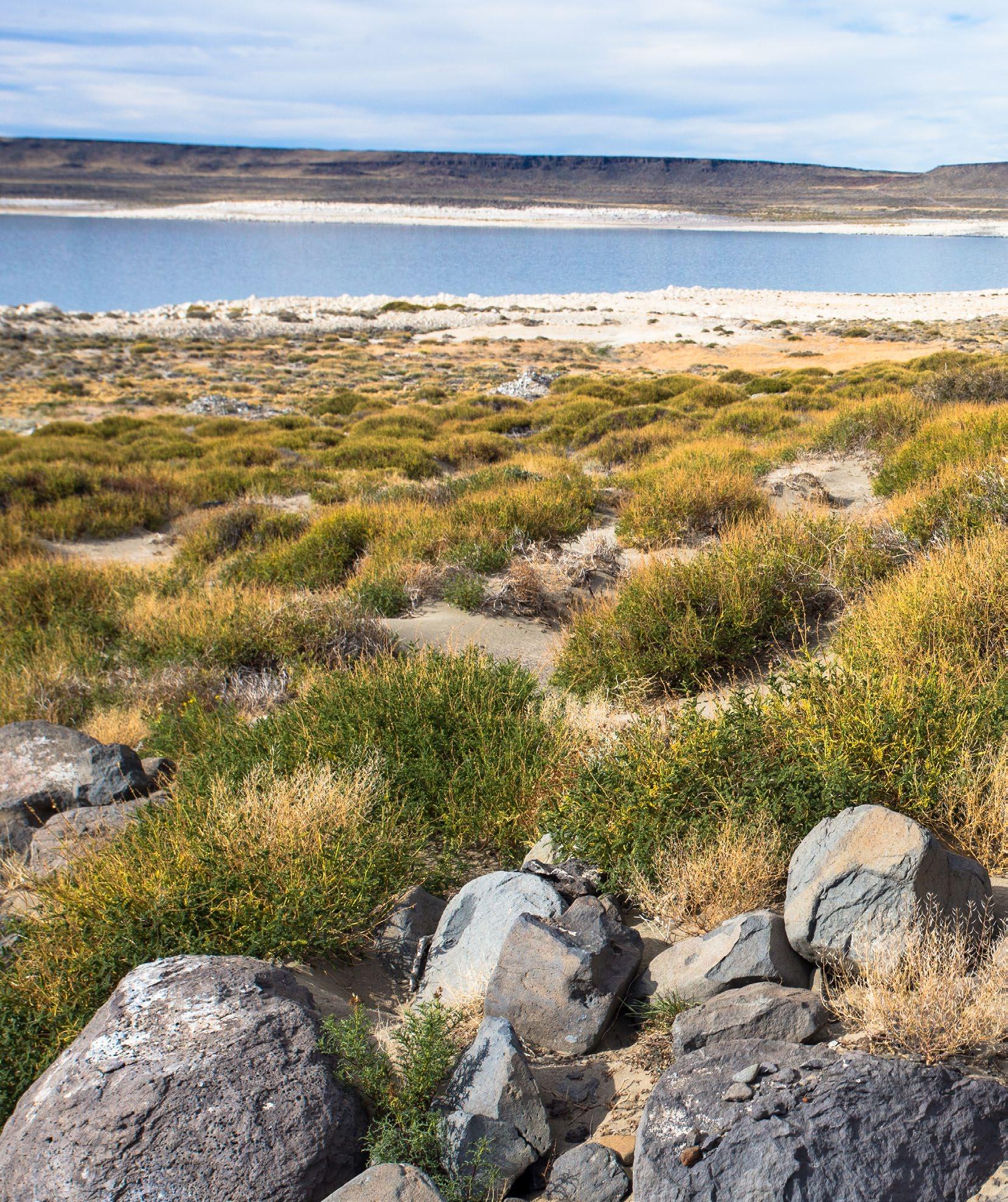
The staff is wonderfully friendly and welcoming and the seven rooms are a good size, each ensuite with all necessary facilities. You will not be making calls on your mobile but you will be able to use the sat phone and slow but adequate Internet. It is not long before you are sitting down to lunch with Luciano explaining the history of the estancia and why a fishing lodge has two birds as its logo.
Back to the previous owner Julio Citadini, who had chosen the two hooded grebes, which Luciano and his father decided to keep because of the significance of the birds. Hooded grebes were only discovered in 1974 and they are very rare but this area is one of their strongholds, again because of the scud populations in the lakes and lagoons. A fully-grown hooded grebe will eat 5000 scuds a day. Luciano and Roberto are very proud that their estancia has been selected to be the headquarters for a breeding programme that they support. The grebes lay two eggs but only tend one and therefore scientists are taking the other and trying to incubate and rear the young for release. The first seven failed but they adjusted their incubation techniques and the eighth chick has survived and the girls working the programme go out and gather scuds each day to feed it in its personal swimming pool. It also has a mirror in its pen to socialize with!
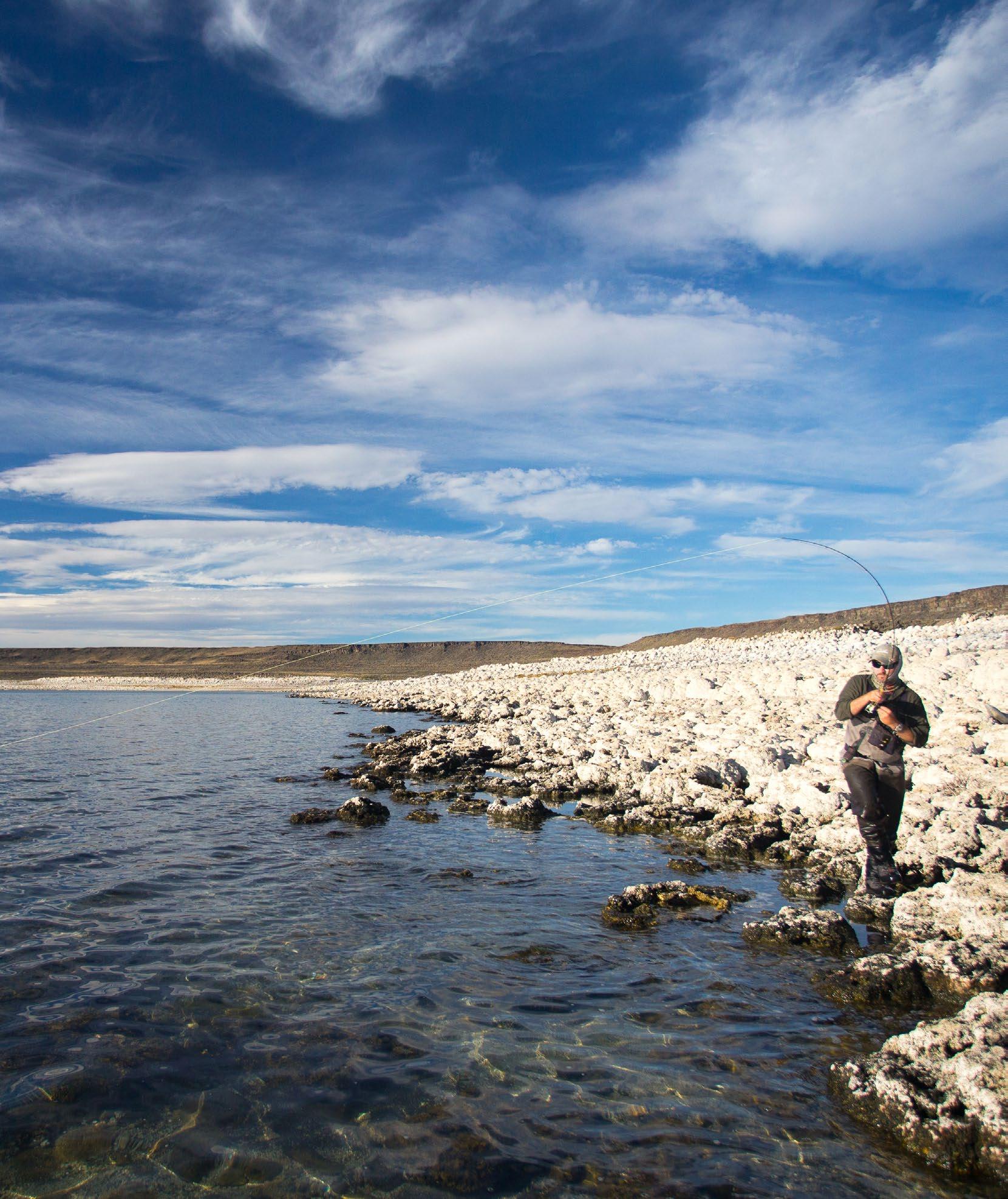
With lunch complete, rods rigged and guides allocated, soon everyone is off to the lake or a lagoon for the afternoon and evening of fishing. The drive to some lagoons is 5 minutes, others longer and to the lake itself, from 25 to 40-minutes depending where you are fishing, by the time you are sitting by the lake. One of the first things that struck me was the descent into the lake crater, which is about 170 metres going down several layers of rock. About half way down, layers of white rocks begin from previous water heights of the lake many, many years ago. The white of the calcium carbonate was created by algae, which, once dry, hardens and turns white.
It layers the basalt rocks and around the lake erosion has sometimes taken the top off the rock, the result being almost a nest-like structure or a boiled egg, which has been opened. This feature is everywhere along the lake edge and is both an obstacle and an asset.
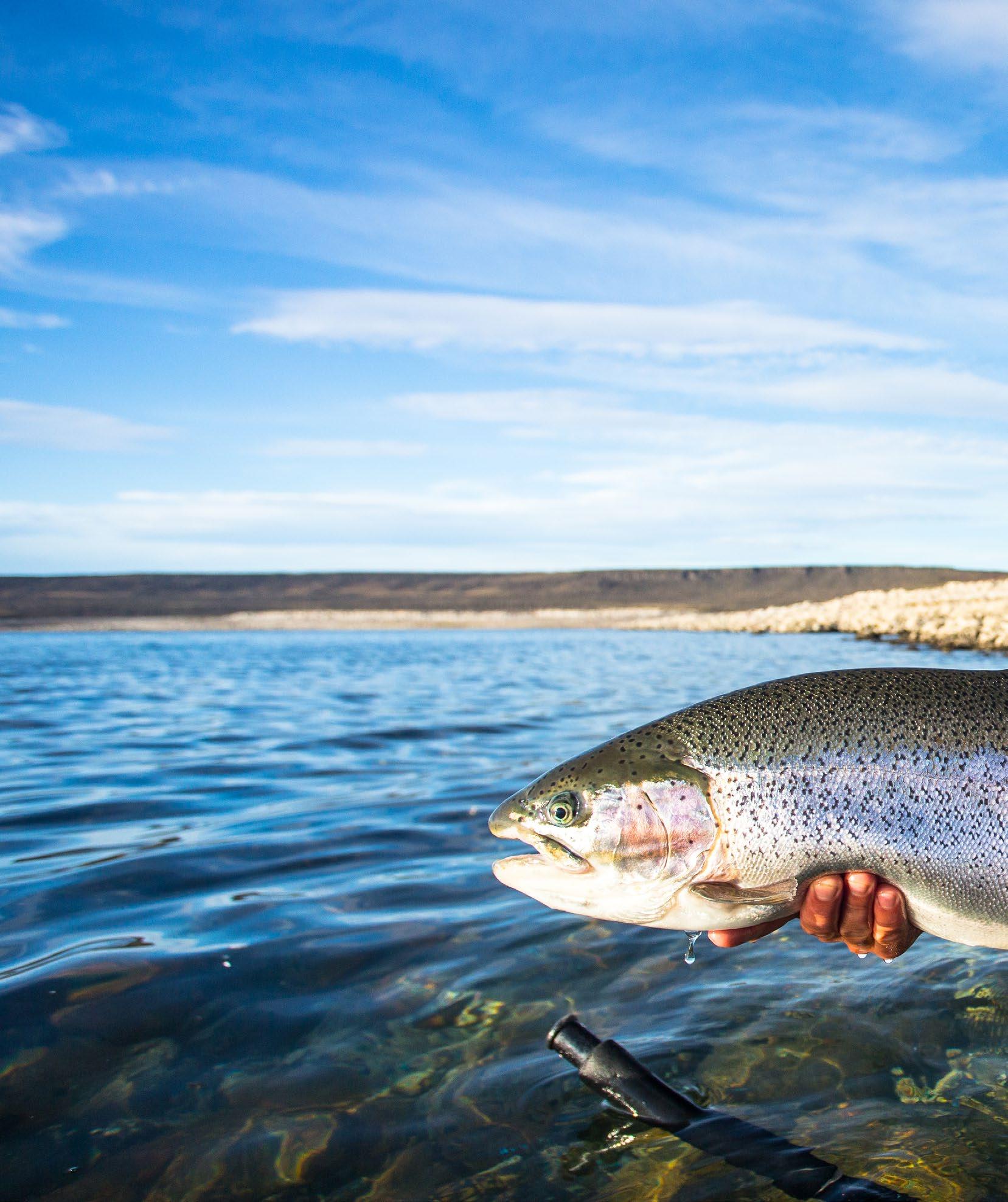
Obstacle, because they have to be climbed over and walked on and can crumble under foot; asset, because they are great casting platforms either under the water or beside it. Nobody really seems to know what took place geologically to form the lake and lagoons but they look like old craters full of water. The theory seems to be that they are not old craters but the result of flowing lava which hardened on top but kept flowing underneath digging holes which many years later (through erosion and freeze/thaw) collapsed forming the giant holes. Some lagoons are slowly drying up, others, that never had fish have dried up. Soon, I found myself at Sea Bay with my superb and very detail-orientated guide, Nano.
Let me say now that if you do not like long drives, bumpy drives or wind, then this place may not be for you. But if you can tolerate them (I am likely in such a category) then it is more than worth it. That afternoon we were faced with a rare situation (which we did not experience again) of having no wind and sitting in the car watching rising fish. Lots and lots of them. These fish are somewhat like sea trout or salmon, or better still, the brown trout of Lake Thingvallavatn, which pretty much only feed on one thing. In the case of Iceland, it is six-inch char, here it is scuds, scuds and more scuds but with the occasional caddis, black gnat or daphnia.

Basically though, you are fishing for a reaction but that does not mean you rip streamers through all the time, far from it. We started our efforts with a CDC emerger with a small pheasant tail underneath. We caught some small, but beautifully shaped and very fat fish but none of the bigger ones. As the numbers of fish rising grew to the point of ridicule (one would cast to a sighted fish and spook a half dozen one had not seen landing the line on the water like spooking bonefish). We switched tactics to a bigger dry, a small mouse-type pattern and after a while removed the nymph wondering if it was spooking the fish. Trout began to come and look at the fly and it was not long before we had our first 4 or 5lbs fish, humble by Lago Strobel standards, but the most beautiful rainbow trout I have ever seen - and strong. More rises followed which for one reason or another did not hook up, but then a great solid take of the dry by a good fish which took off tail-walking and jumping chaotically. It was a beautiful 10lbs+ fish in perfect condition.
Almost as if a switch was flipped while we were photographing and admiring the fish, the wind got up and the waves were soon mounting. We changed tactics and caught one or two small fish but soon it was time to head home. Everyone that evening had experienced the same thing, extraordinary numbers of fish moving before the breeze and great fish hooked, landed or lost on dry flies. Glasses of fine wine were raised to our wonderful first afternoon and we learned that Luciano’s other passion was wine and his generosity was much appreciated.

His selection sits on shelves by the dining table for everyone to look at. But there was also concern around the table – the forecast was for a very cold storm coming in the morning. Everyone just hoped the forecast was wrong as one does.
I will not go into a blow-by-blow account of the rest of my fishing but by 10.30 the next morning some of us were enduring snow, others hail and all of us rain and high winds. I lost a great fish, which nearly got away with my flyline and during the brief respite in the afternoon I landed a 5lbs, 11lbs and close to 13lbs fish all on small nymphs fished slowly. Truly… utterly beautiful fish and wonderfully strong and powerful.
The next three days of my stay were more of the same, very cold (an over 20 degree drop in temperature), very windy (which can be normal but not with the cold) and at times extreme wind of up to 70 kph. The guides say you know the wind has hit 70 when it starts to spray you with water picked up from the lake. At one point they were predicting wind of 120 kph! Believe it or not we still caught some fish. I got another 10lbs fish among others and the best fish amongst us was a 17.5 beauty but the fishing was not as it should have been, in fact, the guides said it was the worst fishing they had ever known.
But we had the ever-upbeat and happy Luciano and his fine wine collection as well as excellent company and remained a happy team of rods with some very jolly lunches in the small lunch huts at Monster and Sea Bay. The guides cook up wonderful stews and other dishes using the gas cauldrons or barbecue that are stationed at each location.





